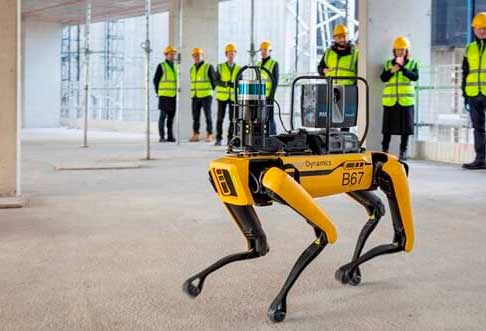A question that architects and builders are interested in today: How can modern automation and robotics technology be used more effectively to deliver projects and generate revenue? The importance of automation and robotics technology in architecture. To more accurately determine attitudes toward adopting robotics in practice, architects should think back to their education. Architecture students are often introduced to the concepts of industrial automation and autonomous robots through the myths of the "master builder," who is considered the historical ancestor of today's architects, who oversaw the design and the construction of buildings and structures.
The main point of this story is that the profession's task of reclaiming disciplines that have become specialized and separate is expressed in contemporary discourse in a concentration on the direct management of construction tasks, solved by robots or other means of industrial automation and controlled by data contained in a digital design model. Such documents in machine-readable form differ significantly from classical drawings in that they do not require a skilled worker to implement the design intent. On the contrary, they make it possible to bypass specialists to restore "craftsmanship" and concentrate knowledge of construction to have a theoretically more direct and profound impact on the design intent during construction.
This file-to-file approach is not straightforward for even the few vertically integrated organizations that can apply it today. It cannot be implemented in today's dominant design-bid-build scheme in the absence of risk and disconnect.
Besides being categorically misleading - AIA contracts imply a prohibition on architects using "tools and techniques" - this approach downplayed and ignored the higher-level potential of robotics in architecture, particularly the prospects for professional services and revenue models based on an autonomous way of gathering information from the field.
Remote Construction Management.
Architects who use telepresence do not have their construction site and do not work on it, making it challenging to provide rapid access to the data they need to supplement their design models with the real world. Inefficient construction organization practices separate designers from site workers: traditionally, only a few architects are on-site periodically, while the rest of the office works at personal computers. While any loss of communication has unintended results, the actual threat of isolated design culture is that it leads to a misunderstanding of how information is communicated.
Model-based delivery methods are based on the understanding that the information needed to construct a building is entirely in the design model; in reality, most of the information necessary to build the building comes from the professionals on site. While the linear construction process is designed to bring the design intent more deeply into reality, it reduces the chances of fruitful interaction between architects and experts. The design intent is presented as a set of fixed information, and there is no opportunity to consider feedback or adaptation to site conditions.
This form of knowledge decentralization is not a hindrance to construction but rather a prerequisite. Successful construction relies on a great deal of experience in the field; where the process of knowledge decentralization does not rely on delivery technology, communications from the bottom up are forced to swim toward the flow of linear data. It is costly and results in inadequate information being fed into the model, making it difficult to develop practical design documents and deliver the project to the owner.




